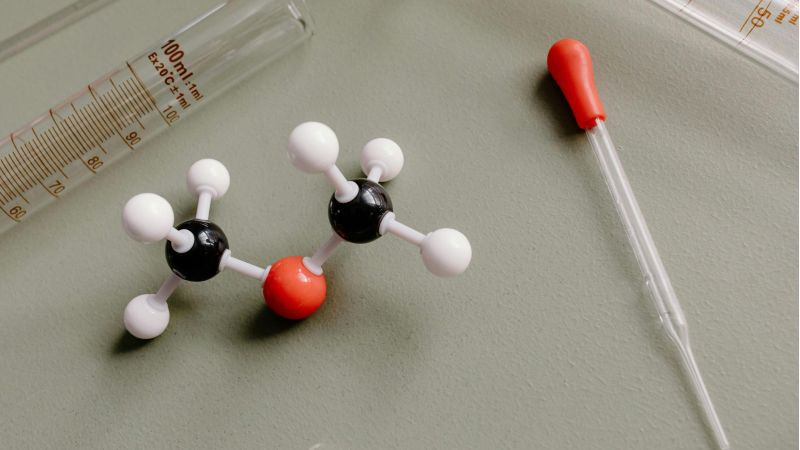
NAD Deficiency Symptoms: 6 Common Signs of Low NAD Levels
Feeling sluggish, mentally foggy, or struggling to keep up with your routine lately?
While it’s quite normal to feel this way from time to time, you shouldn’t take these frustrating signs for granted.
What seems like just another bad day could be a telltale sign that your NAD+ levels are running low.
Nicotinamide adenine dinucleotide (NAD+) is an essential coenzyme that plays a critical role in energy production, DNA repair, and overall health.
Unfortunately, NAD+ levels naturally decline with age and can be further affected by lifestyle factors, leading to a range of symptoms that are often overlooked.
So, what are these warning signs, and how can you optimize your NAD+ levels to stay healthy and active as you age?
In this article, we discuss:
- Why your NAD levels are dropping faster than you think—and it’s not just because you’re getting older.
- 7 subtle signs of NAD deficiency that many people dismiss as “just part of aging,” but shouldn’t.
- The red flags of severe NAD deficiency you can’t afford to ignore.
- How to accurately detect low NAD levels in your body and the easiest, most effective ways to boost them naturally.
Understanding NAD+ and Why It Declines
Nicotinamide adenine dinucleotide, or NAD+, is an essential coenzyme found in every cell of our body. It plays a key role in several critical processes, including energy metabolism, DNA repair, and cellular signaling.1
Essentially, NAD+ acts like a shuttle for electrons during metabolic reactions, helping to transform the food we consume into usable energy and supporting the production of ATP, which is the main energy currency for our cells.
Beyond just energy production, NAD+ also maintains the integrity of our DNA and regulates various cellular functions that keep us healthy.
Unfortunately, by the time we reach our 30s, our NAD+ levels start to decline. In fact, NAD+ can decrease by up to 50% as we age,2 with noticeable reductions in the skin and other tissues.
This decline can be accelerated by factors like oxidative stress,3 unhealthy diets, and lifestyle choices, leading to symptoms that are often mistaken for the typical signs of aging.
But in reality, these may be early signs of low NAD+ levels, indicating that it’s time to take action and make necessary lifestyle changes to support your health and longevity.
Common Symptoms of NAD+ Deficiency

Below are six common health symptoms that indicate you may be deficient in NAD.
Fatigue and Low Energy
NAD is essential for energy metabolism. Think of it as the engine that powers your body, helping convert the food you eat into usable energy. However, when your NAD+ levels drop, it can disrupt your metabolism and may result in fatigue and low energy.
Your body might also struggle to produce ATP (adenosine triphosphate), which is your main source of energy. The result? You might feel sluggish and worn out. NAD+ also supports the proper functioning of enzymes that protect against oxidative damage.
When these protective enzymes can’t do their job because of low NAD levels, it creates an imbalance between harmful reactive oxygen species and protective antioxidants4 that can further drain your energy and leave you feeling even more fatigued.
Moreover, NAD+ is important in metabolizing carbohydrates, fats, and proteins. When your NAD+ levels are low, these metabolic pathways can become inefficient, leading to even more tiredness. For instance, if your body can’t break down fatty acids properly, it can accumulate unused substrates that sap your energy.
Not to mention, during physical activity, your muscles depend heavily on NAD+ for energy.5 If you’re low on NAD+, you might experience muscle weakness and decreased endurance, making even simple tasks feel much more challenging.
Cognitive Symptoms
NAD is also important for maintaining healthy cognitive function. When your levels drop, you might start to notice some cognitive symptoms, such as mental fog, memory lapses, and a general decline in sharpness.
This is because NAD+ is crucial for energy metabolism and mitochondrial function, both of which are essential for your brain to perform at its best. When NAD+ levels are low, the brain struggles to produce adenosine triphosphate (ATP)6—the energy that powers our cells—leading to sluggish thinking and that frustrating feeling of mental cloudiness or fatigue.
Research shows that a deficiency in NAD+ can worsen neuroinflammation and oxidative stress, both of which are harmful to cognitive health, potentially leading to increased neuronal damage and cognitive issues,7 such as forgetfulness and decreased mental agility.
Skin and Appearance Changes
Is your skin looking dry and dull despite your diligent skincare routine and healthy lifestyle? One hidden culprit could be low NAD+ levels.
Research shows that low NAD+ levels can hinder your skin’s ability to repair itself, particularly from damage caused by sun exposure. This impairment can result in more visible signs of aging, such as wrinkles and loss of elasticity.
Additionally, because NAD+ plays a key role in supporting mitochondrial function—the process that provides the energy your skin cells need to regenerate and stay vibrant8—low NAD+ levels can impede cell renewal. This leaves your skin looking tired, dull, and less radiant.
Poor Sleep Quality
Having trouble getting a restful night’s sleep? It could be more than just stress or a racing mind—it might actually be a deficiency in NAD+ levels.
As a coenzyme, NAD+ supports energy production and maintains healthy cells, including those involved in regulating your sleep cycle. When NAD+ levels decline, especially as we age, this drop can disrupt your sleep patterns.
Since NAD+ helps regulate key “clock” genes that control your sleep-wake cycle, it can throw off your body’s internal clock, or circadian rhythm,9 making it harder to fall asleep or stay asleep through the night.
Research also reported that NAD+ is essential for the synthesis of serotonin from tryptophan, a precursor amino acid.10 If NAD+ levels drop, this metabolic pathway can become inefficient, potentially leading to reduced serotonin and subsequently lower melatonin levels.
Therefore, you may experience sleep disturbances and increased fatigue due to inadequate melatonin production.
Mental Health and Mood Swings
Low NAD+ levels can significantly affect your mood and mental health, often manifesting as mood swings, irritability, anxiety, or even depression.
This occurs because NAD+ deficiency disrupts the balance of crucial neurotransmitters like serotonin, dopamine, and norepinephrine,11 which are essential for regulating mood and emotional responses. As a result, you may experience persistent feelings of anxiety or sadness.
NAD+ is also important in activating sirtuins—proteins that help cells manage stress.12 When NAD+ levels are low, sirtuins become less effective, which can contribute to mental health challenges like anxiety and irritability.
This makes it harder for your brain to cope with stress, intensifying emotional imbalances.
Metabolic Health Issues
NAD+ deficiency can lead to various metabolic problems,13 including weight gain, insulin resistance, and a higher risk of metabolic disorders.
NAD+ underpins key metabolic processes like glycolysis, the TCA cycle, and oxidative phosphorylation. When NAD+ levels drop, these processes become less efficient, disrupting energy metabolism and contributing to issues such as weight gain and insulin resistance.
Low NAD+ also affects enzymes involved in energy production, leading to reduced ATP synthesis and increased fat storage, particularly in the liver and fat tissue. This buildup of fat triggers inflammation, further worsening insulin resistance.
Moreover, NAD+ activates sirtuins, proteins that help regulate glucose and fat metabolism. When NAD+ levels are low, sirtuin activity declines, making it harder for the body to control blood sugar and insulin sensitivity,14 which raises the risk of type 2 diabetes.
People with low NAD+ levels are also more prone to developing metabolic conditions like diabetes and non-alcoholic fatty liver disease (NAFLD).
Severe NAD+ Deficiency Symptoms

People with NAD+ deficiency may also experience severe symptoms similar to pellagra, a condition caused by niacin deficiency.15
These symptoms indicate a critical lack of NAD+.
Dermatitis typically manifests as a scaly rash that worsens with sun exposure, indicating the body’s diminished capacity for healing due to low NAD+ levels. Diarrhea stems from impaired gut function and disrupted metabolism, which can lead to dehydration and poor nutrient absorption. Cognitive issues like memory loss and confusion arise because NAD+ is integral for brain cell energy production and neuronal health.
If left untreated, NAD+ deficiency can result in severe metabolic dysfunction,16 increasing the risk of serious conditions such as cardiovascular disease, diabetes, neurodegenerative disorders, and even death.
Cardiovascular Impact of NAD+ Deficiency

Low NAD+ levels can greatly increase the risk of cardiovascular diseases,17 hypertension, and reduced heart function. When NAD+ levels decline, vital processes like energy metabolism, DNA repair, and oxidative stress management become compromised, leading to a range of cardiovascular issues, especially hypertension.
Research published in the Signal Transduction and Targeted Therapy shows that hypertensive patients have a 44% lower NAD+ level in their peripheral blood mononuclear cells18 compared to those with normal blood pressure. This reduction is closely linked to impaired vascular function and elevated arterial pressure.
Additionally, NAD+ deficiency can cause mitochondrial dysfunction, which is crucial for maintaining cardiac energy metabolism.19 This leads to reduced ATP production and increased oxidative stress, both of which contribute to heart failure and other cardiovascular problems.
The enzyme CD38, which depletes NAD+, is often overactive in hypertensive individuals, further draining NAD+ levels and negatively affecting vascular health and heart function.
Beyond hypertension and weakened heart function, chronically low NAD+ levels can increase the risk of severe cardiovascular diseases like atherosclerosis and coronary artery disease,20 which, if not addressed, can result in life-threatening events such as heart attacks and strokes.
NAD+ Deficiency in Specific Populations

While it’s common knowledge that NAD+ levels decline after the age of 30, certain groups are at a higher risk of experiencing a deficiency.
Obese individuals, for example, tend to have significantly lower NAD+ levels21 than those with a healthy weight. This is because excess fat triggers chronic inflammation and metabolic imbalances, which further deplete NAD+ levels.
Obesity is also associated with impaired NAD+ metabolism, increasing insulin resistance,22 and elevating the risk of type 2 diabetes and related conditions.
Genetic disorders also contribute to NAD+ deficiency risk. Individuals with conditions like congenital NAD deficiency disorder (CNDD)23 experience inadequate NAD+ production, leading to developmental abnormalities and other health complications.
Genetic mutations that interfere with enzymes responsible for NAD+ synthesis reduce the availability of this vital coenzyme, contributing to congenital defects and increased health risks.
Given all these factors, the important question is: Are you NAD+ deficient? The only way to find out is to test.
How to Test if Your NAD Levels Are Low
Now that you understand the signs of NAD deficiency, how do you find out if your NAD levels are truly suboptimal?
At Jinfiniti, we prioritize precision over guesswork. That’s why we recommend the most reliable approach: testing your NAD+ levels directly.
Our Intracellular NAD Test gives you a clear picture of what’s happening inside your cells. We measure your actual NAD+ levels to help you see where you stand – whether they’re running low, sitting at a healthy baseline, or higher than average. With these insights, you can make smarter decisions about your NAD+ supplements and know if they’re really working for you.
How to Treat Low NAD Levels

If you suspect your NAD+ levels are low or have confirmed a deficiency through testing, there are several evidence-based approaches to increase your NAD+ levels naturally and through supplementation. The key is finding the right combination of lifestyle modifications and targeted support for your individual needs.
Research shows that regular exercise, particularly high-intensity training, naturally boosts NAD+ production. Combining this with a diet rich in B3 vitamins and stress management techniques can help optimize your body’s NAD+ levels while preventing excessive depletion of existing stores.
For those seeking intensive support, medical NAD+ therapies like IV infusions are available at specialized clinics. While these treatments can rapidly elevate extracellular NAD+ levels, they are costly and may cause side effects like flushing and headaches, requiring close medical supervision.
A more accessible and scientifically-validated approach is supplementation with NAD+ precursors.
Our High Purity NAD+ Precursor powder offers a premium-grade, pure form of NAD+ as a building block that your body can efficiently convert into active NAD+.
For those seeking enhanced results, our breakthrough Vitality ↑® NAD+ Booster takes supplementation to the next level by combining a clinically proven NAD+ precursor with synergistic ingredients. The strategic inclusion of creatine monohydrate helps stabilize cellular energy systems, while D-ribose and nicotinamide work together to optimize NAD+ synthesis pathways.
This unique formulation has been shown to increase NAD+ levels more effectively than single-ingredient supplements, providing total support for your cellular health and energy production.
With these strategies in hand, you’ll be on the right track to treating NAD deficiency and promoting longevity.
Referenced Sources:
- https://pmc.ncbi.nlm.nih.gov/articles/PMC7963035/ ↩︎
- https://pmc.ncbi.nlm.nih.gov/articles/PMC7442590/ ↩︎
- https://www.nature.com/articles/s41598-019-46120-z ↩︎
- https://www.nature.com/articles/s41392-023-01577-3 ↩︎
- https://onlinelibrary.wiley.com/doi/10.1155/2020/8819627 ↩︎
- https://pmc.ncbi.nlm.nih.gov/articles/PMC8444613/ ↩︎
- https://pmc.ncbi.nlm.nih.gov/articles/PMC9370773/ ↩︎
- https://pmc.ncbi.nlm.nih.gov/articles/PMC9512238/ ↩︎
- https://pmc.ncbi.nlm.nih.gov/articles/PMC10665902/ ↩︎
- https://www.wikipathways.org/pathways/WP4210.html ↩︎
- https://pmc.ncbi.nlm.nih.gov/articles/PMC2612120/ ↩︎
- https://pmc.ncbi.nlm.nih.gov/articles/PMC9437461/ ↩︎
- https://www.nature.com/articles/s41392-020-00311-7 ↩︎
- https://pmc.ncbi.nlm.nih.gov/articles/PMC5686634/ ↩︎
- https://www.ncbi.nlm.nih.gov/books/NBK557728/ ↩︎
- https://www.frontiersin.org/journals/cardiovascular-medicine/articles/10.3389/fcvm.2021.716989/full ↩︎
- https://www.ahajournals.org/doi/full/10.1161/CIRCULATIONAHA.121.056589 ↩︎
- https://www.ncbi.nlm.nih.gov/pmc/articles/PMC10505611/ ↩︎
- https://elifesciences.org/articles/59828 ↩︎
- https://www.sciencedirect.com/science/article/pii/S2667089524000142 ↩︎
- https://academic.oup.com/jcem/article/101/1/275/2806840?login=false ↩︎
- https://pmc.ncbi.nlm.nih.gov/articles/PMC5469033/ ↩︎
- https://www.ncbi.nlm.nih.gov/books/NBK593504/ ↩︎
Read More














